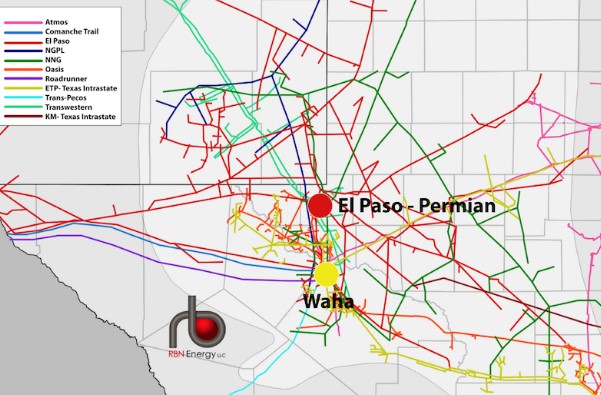Reuters
Spot natural gas prices at the Waha hub in the Permian basin in West Texas turned negative for the first time since April as mild weather cut demand for the fuel.
Longer term, however, Waha forwards were trading at their highest levels in years on expectations gas supplies from oil drilling in shale basins like the Permian will drop after low crude prices this year due to coronavirus demand destruction caused energy firms to cut rigs.
Next-day prices at Waha NG-WAH-WTX-SNL dropped to an average of minus 32 cents per million British thermal units (mmBtu) for Monday, their lowest since falling to -$3.67 in April, according to pricing data from Refinitiv.

Waha forwards, meanwhile, averaged $1.90 per mmBtu for the balance of 2020 and $2.84 for calendar 2021, which would be the highest in a year since 2014 when prices averaged $4.30.
That compares with an average of 94 cents per mmBtu so far in 2020, 91 cents in 2019, and a five-year average (2015-2019) of $2.11.
Negative Waha prices, which happened several times in 2019 and 2020, occurred because energy firms were not able to build pipelines fast enough to keep up with growing gas output associated with record Permian oil production.
That forced some drillers to flare record amounts of gas or pay others to take it rather than shut oil wells because they could make enough money selling crude and other liquids to cover their gas losses.
But that was before U.S. oil CLc1 futures tumbled to a record low in negative territory earlier this year after coronavirus caused demand for crude to drop faster than producers can cut output.
In response to the oil price plunge, U.S. energy companies have slashed spending on new drilling, cutting the oil and gas rig count to a record low in August. [RIG/U]
Reporting by Scott DiSavino; Editing by Chizu Nomiyama

